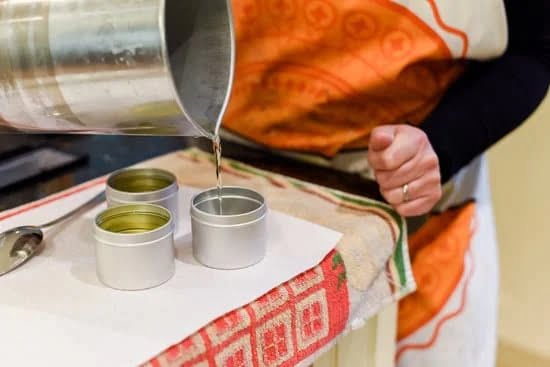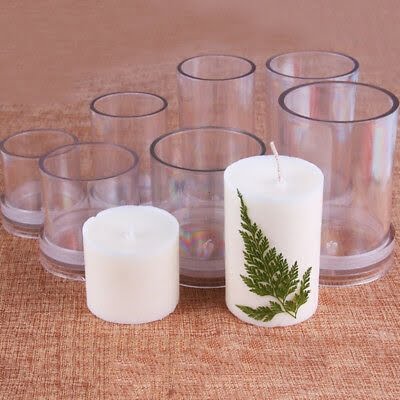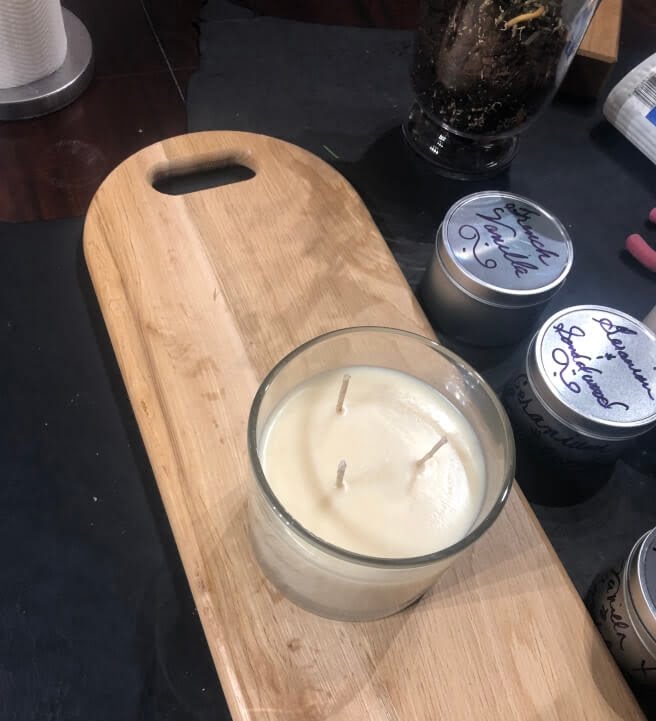Candles have been used for centuries in various cultures for their symbolism and significance. From religious ceremonies to spiritual practices, candles hold a special place in our lives.
In this article, we will explore the art of making candles, the importance of the curing process before lighting them, testing candle quality for safety, allowing fragrance oils to settle, understanding manufacturer’s instructions, and knowing when you are ready to light your homemade candles. Finally, we will delve into the joy and satisfaction that comes from lighting a candle that you have made yourself.
Throughout history, candles have played a significant role in different cultures around the world. They were initially created as a practical source of light before electricity became widespread. However, over time, they evolved beyond their utilitarian purpose and took on symbolic meaning as well.
In many religious traditions, candles represent illumination and spirituality. They are often lit during prayer or meditation as a way to focus the mind and connect with the divine. Additionally, candles can signify hope, renewal, celebration, and remembrance.
The process of making candles is an art form that has been passed down through generations. Whether you are using wax or other materials like soy or beeswax, creating your own candles can be a rewarding experience. In this article, we will provide step-by-step instructions on how to make candles at home using various materials.
We will also discuss the essential tools and ingredients needed for the candle-making process. It is important to note the safety precautions that should be considered while making candles to ensure a safe environment.
Candles require a curing period before they can be safely lit. The curing process allows the wax to fully set and harden while ensuring that any lingering moisture evaporates. As tempting as it may be to immediately light your freshly made candle, waiting patiently is crucial for optimal performance and safety.
We will delve into the importance of this curing process in detail, including how long it typically takes for candles to cure and the factors that can affect the curing time. Understanding and respecting this vital step will ultimately contribute to a superior candle-burning experience.
Overall, the journey of making your own candles requires patience and attention to detail. Each step in the process contributes to the final product’s quality and safety. By understanding the symbolism and significance of candles, following proper instructions, allowing necessary curing time, testing for quality assurance, and considering personal preferences, you can ensure that your homemade candles are ready to be lit at just the right moment.
The Art of Making Candles
Making candles can be a rewarding and creative hobby that allows you to create beautiful and personalized pieces for your home. Whether you are making candles for personal use or as gifts, following a step-by-step guide can help ensure successful results. This section will provide a detailed guide on how to make candles at home using different materials, essential tools, ingredients, and safety precautions to consider.
Gathering Supplies
Before getting started with the candle making process, it is important to gather all the necessary supplies. Some basic supplies include:
- Wax: Choose a wax type that suits your preferences and needs. Common options include soy wax, beeswax, and paraffin wax.
- Wicks: Select the appropriate wick size for the diameter of your candle. The right wick size ensures proper burning and prevents tunneling.
- Fragrance oils or essential oils (optional): If you want scented candles, choose high-quality fragrance oils or essential oils in your desired scent.
- Dyes (optional): If you prefer colored candles, dyes specifically designed for candle making can be added to the wax.
- Heat-resistant container or mold: Depending on your preferred candle shape, choose a container or mold made from a material that can withstand the heat of melted wax.
- Double boiler or melting pot: To melt the wax safely and evenly, use a double boiler system or a specialized melting pot.
- Thermometer: A thermometer is crucial for monitoring and maintaining the right temperature throughout the candle making process.
- Stirring utensil: Use a heat-resistant stirring utensil such as a wooden spoon or stainless steel whisk to mix the melted wax thoroughly.
- Scale: Accurate measurements of wax and other ingredients are essential for consistent results; therefore using a scale is recommended.
- Safety equipment: Protect yourself by wearing gloves and safety goggles when handling hot wax and working with fragrances or dyes.
The Candle Making Process
Once you have gathered all the necessary supplies, you can begin the candle making process. Here is a general step-by-step guide:
- Prepare your container or mold: If using a container, ensure it is clean and dry. If using a mold, apply a release agent to prevent the wax from sticking.
- Melt the wax: Use a double boiler or melting pot to melt the appropriate amount of wax according to your chosen container or mold size. Monitor the temperature closely using a thermometer.
- Add fragrance oils or dyes (optional): If desired, add fragrance oils or dyes to the melted wax according to their recommended usage rates. Stir gently but thoroughly to incorporate them evenly throughout the wax.
- Set the wick: Attach the wick to the center bottom of your container using a wick sticker or hot glue gun. Alternatively, if using a mold, secure it in place by tying it around a pencil placed horizontally above the mold.
- Pour in the wax: Slowly pour the melted wax into your prepared container or mold while holding the wick in place with one hand. Leave some space at the top as it will help prevent overflow when burning.
- Let it cool and set: Allow enough time for the candle to cool and solidify completely before attempting to remove it from its mold (if applicable). This usually takes several hours depending on factors such as room temperature and wax type.
- Trim and test: Trim the wick to approximately ¼ inch before lighting your candle for optimal burning. Before enjoying your homemade creation, conduct some quality tests such as ensuring proper fit and stability in containers, even burn pool formation, and sufficient scent throw (if scented).
By following these steps and taking necessary safety precautions, you can create beautiful homemade candles that not only add ambience but also reflect your personal style and creativity.
The Curing Process
The curing process is a crucial step in candle making that ensures the quality and performance of the finished product. Curing involves allowing the candles to rest and settle before they are lit, allowing the wax to fully cure and harden. This process allows for optimal burning, scent release, and overall longevity of the candle.
Explanations of the Curing Process and Its Importance
During the curing process, the chemical reactions within the wax occur as it cools down from its melted state during candle making. This cooling period is necessary for the wax to solidify properly, preventing issues such as tunneling (when a hole forms in the center of the candle) or uneven burning. It also allows any remaining moisture within the candle to evaporate, ensuring a clean burn with minimal smoke.
Curing is particularly essential for homemade candles made with natural waxes like soy or beeswax. These waxes require more time to cure compared to paraffin wax due to their different compositions. Without proper curing, these natural waxes may not burn as efficiently or produce optimal fragrance throw.
How Long Does It Typically Take for Candles to Cure
The duration of the curing process can vary depending on several factors such as:
- Wax type: Different types of wax require varying amounts of time to cure properly. Soy wax often needs at least 48 hours, whereas beeswax might take up to a week or longer.
- Candle size: Larger candles typically need more time to cure compared to smaller ones due to their increased volume of wax.
- Additives: Adding dyes, fragrance oils, or other additives may impact the curing time. Some additives may extend or reduce this period.
It’s important for candle makers to refer to their specific wax manufacturer’s guidelines regarding curing times for accurate recommendations.
Factors That Can Affect Curing Time
While there are general guidelines for the curing process, it’s crucial to consider certain factors that can affect the time needed for candles to fully cure:
- Humidity: Higher levels of humidity in the environment can prolong the curing process. It is advisable to cure candles in a dry and cool area with proper ventilation.
- Ambient temperature: Lower temperatures can slow down the curing process, while higher temperatures can speed it up.
- Candle design: The shape and thickness of the candle may impact how long it takes for the wax to solidify completely. Thicker candles might need additional curing time.
By taking these factors into consideration and allowing ample time for the candles to cure, candle makers can ensure that their final product burns smoothly, emits fragrance effectively, and provides an enjoyable experience for candle enthusiasts when they finally light their homemade creation.
Testing Candle Quality
When it comes to candle making, ensuring the quality and safety of your creations is paramount. Before lighting a homemade candle, it is essential to conduct tests to guarantee that it will burn properly and without any potential hazards. There are various methods you can employ to test the quality of your candles, taking into account factors such as wick size, wax type, and overall craftsmanship.
One important aspect to consider is the wick size. A properly sized wick is crucial for an even and efficient burn. To determine if your chosen wick size is appropriate for your candle, you can perform a simple burn test. Trim the wick to your desired length (usually around 1/4 inch) and light the candle. Observe how it burns – a well-centered flame that produces minimal smoke or soot indicates a proper wick size.
Additionally, examining the type of wax used in your candle is vital for safety purposes. Different types of wax have different melting points and burning characteristics. It is recommended to purchase wax specifically designed for candles from reputable suppliers. By purchasing high-quality wax, you can ensure that your homemade candles will burn safely and provide a long-lasting flame.
In addition to these tests, inspecting the overall appearance and craftsmanship of your homemade candles can give you valuable insights into their quality. Look for any potential issues such as uneven surfaces or cracking, as these may indicate problems with the cooling or pouring process. Addressing these issues before lighting the candle can prevent accidents such as excessive dripping or an unstable flame.
By conducting thorough tests on your homemade candles, you can have peace of mind knowing that they are safe to light. Remember that variations in materials and techniques may require different testing methods, so it’s important to adapt these guidelines accordingly based on individual circumstances.
- To ensure safe burning conditions:
- Perform a burn test to check the wick size
- Purchase high-quality wax specifically designed for candles
- Inspect for any potential issues with appearance and craftsmanship
Taking the time to test and ensure candle quality not only guarantees your safety but also enhances your overall candle-making experience. By following these guidelines, you can confidently light your handmade creations, knowing that they will provide a beautiful and safe flame.
The Scent Journey
Scent plays a significant role in candle making, as it adds an extra sensory dimension to the experience. Fragrance oils are commonly used to enhance the ambiance and create a pleasant atmosphere when lighting candles. However, it is important to allow these fragrance oils to settle before actually lighting the candle.
When scenting candles with fragrance oils, it is crucial to understand that they require time to blend properly with the wax. This process is known as the “scent journey,” and it allows the fragrance oils to disperse uniformly throughout the candles, ensuring an even and consistent scent throw when lit. If you were to light a newly scented candle immediately after adding the fragrance oil, you may not experience its full potential or desired scent strength.
To allow fragrance oils to settle, it is recommended to let the candles rest for a specific period of time before lighting them. The general rule of thumb is to wait at least 24-48 hours after adding the fragrance oil.
During this time, the candles should be stored in a cool, dry place away from direct sunlight and excessive heat. This resting period allows the fragrance molecules to bond with the wax and properly cure, resulting in a more pronounced and stable scent when burned.
It’s important not to rush this step in order to achieve optimal results. Different types of fragrances may require varying settling times, so it’s always advisable to refer to specific guidelines provided by your chosen fragrance oil manufacturer. By allowing sufficient time for the scent journey, you can ensure that your homemade candles deliver their intended aromas beautifully, creating a delightful ambiance in any space.
Recommended time frame for scent settling process
To provide a general guide based on different categories of fragrances:
- Citrus scents: These fragrances tend to be lighter and less complex than others. It is recommended to allow them to settle for 24-48 hours before lighting the candle.
- Floral scents: These fragrances often contain a mix of top, middle, and base notes which might require longer settling time. It is generally recommended to allow floral scents to cure for 48-72 hours before lighting.
- Woody or spicy scents: These fragrances tend to be rich and warm, often requiring more time to reach their full potential. It is best to wait 72-96 hours before lighting candles with these fragrances.
Remember that these are mere guidelines, and individual fragrance oils may have specific recommendations from their manufacturers. Always refer to those guidelines for the best results in allowing your fragrance oils to settle before enjoying the delightful scent of your homemade candles.
Following Manufacturer’s Instructions
When it comes to lighting a candle that you have made, it is important to understand and follow the instructions provided by the manufacturer. Each type of candle may have different guidelines for when it is safe to light after making it. These instructions are designed to ensure optimal burn performance and safety.
Manufacturers of candles often provide specific timeframes for curing the candles before lighting them. Curing refers to the process of allowing the wax and fragrance oils to fully set and bind together, resulting in a better quality candle. This process typically takes anywhere from 24 hours to several weeks, depending on the type of wax, additives used, and the particular scent chosen.
For example, soy wax candles typically require a longer curing time compared to paraffin or beeswax candles. This is because soy wax has a softer consistency and needs more time to harden properly. On the other hand, if you have added essential oils or botanicals to your candle, they may need additional time to fully infuse into the wax before it is considered ready for burning.
It is crucial to be patient and adhere to these curing timeframes provided by the manufacturer. Rushing this process may result in an inferior quality candle that doesn’t burn properly or emit its intended fragrance. So, while it might be tempting to rush into lighting your handmade creation right away, waiting patiently during the curing process will ultimately lead to a better candle burning experience.
Personal Preferences
When it comes to lighting your homemade candles, personal preferences play a crucial role. While there are general guidelines for the curing process and scent settling, every candle maker may have their own preferences and criteria for determining when a candle is ready to be lit.
Factors such as scent intensity, curing time, and overall quality can vary from person to person. Trusting your instincts and creating your own guidelines based on personal preferences is key in knowing when you’re ready to light your homemade candles.
One factor to consider is the intensity of the scent. Fragrance oils are an important component in candle making as they add the desired aroma to the candle. However, it is essential to allow the fragrance oils to settle before lighting the candle.
This settling process typically takes at least 24 hours but can vary depending on the specific fragrance and wax combination used. It is advised to wait until you feel that the scent has fully developed and is at its desired strength before lighting the candle.
Another consideration is the curing time of the candles. Curing refers to the process by which candles are allowed to fully harden and develop their maximum scent throw before being burned.
The length of time required for curing can depend on factors such as the type of wax used, additives incorporated into the wax, and even environmental conditions like temperature and humidity. As a general guideline, most candles should be cured for at least 48 hours, though some may require longer periods of up to two weeks or more.
Ultimately, trusting your instincts as a candle maker is crucial in determining when you’re ready to light your homemade creation. You can observe various aspects such as how well the wax has solidified, whether there are any visible imperfections or air bubbles present, and if any discoloration has occurred during the curing process.
Additionally, conducting a burn test by lighting a small portion of the wick can help assess the quality of the candle before fully committing to lighting it.
Whether it’s the scent intensity, curing time, or overall quality, every candle maker will have their own set of preferences when deciding on the right time to light their homemade candles. By trusting your instincts and creating your own guidelines based on personal preferences, you can ensure that each candle is enjoyed at its optimal state.
The satisfaction gained from lighting a candle that has been patiently waiting for the perfect moment is truly rewarding and adds to the joy of candle making as a whole.
| Factors to Consider | Suggested Time Frame |
|---|---|
| Scent intensity | At least 24 hours after fragrance oils have settled |
| Curing time | At least 48 hours, but may vary depending on wax type and additives |
| Quality assessment | Trust your instincts based on observations and conduct burn tests if necessary |
The Joy of Lighting
Finally, after all the hard work and patience that goes into making homemade candles, the moment arrives when you can light them and enjoy their warm glow. This is a time of celebration and satisfaction, as you get to see the fruits of your labor come to life. Lighting a candle that you have made yourself not only adds a personal touch to your space but also provides a sense of accomplishment and pride.
In many cultures around the world, lighting candles holds great significance and is accompanied by rituals or traditions. For example, in some religious ceremonies, candles are lit to symbolize spiritual enlightenment or as offerings to deities. In other traditions, candles are used for mindfulness and meditation practices. The act of lighting a candle can create a serene ambiance and serve as a reminder to focus on intentions or prayers.
When it comes to homemade candles, there are no set rules dictating when exactly you should light them. It ultimately depends on personal preferences and factors such as scent intensity, curing time, and desired ambiance. However, there are some general guidelines that can help you determine when your candles are ready to be lit.
| Candle Type | Recommended Curing Time |
|---|---|
| Paraffin Wax Candles | 1-2 weeks |
| Soy Wax Candles | 2-3 weeks |
| Beeswax Candles | 3-4 weeks |
These timeframes represent an average estimation for curing homemade candles before lighting them. However, it’s essential to keep in mind that the curing process can be influenced by various factors, such as humidity, fragrance oils used, and the size of the candle. It’s always a good idea to test the quality and safety of your candles before lighting them. This can be done by examining factors like wick size and burn time.
Overall, the joy of lighting homemade candles lies not only in enjoying their beautiful glow but also in appreciating the process and patience required to create them. So take a moment to savor your accomplishment, light your candle, and embrace the warmth and tranquility it brings to your space.
Conclusion
In conclusion, the process of making a candle does not end after it is created. There are several factors to consider before lighting a homemade candle. The curing process is essential in ensuring that the candle burns safely and efficiently. It is recommended to wait until the candle has properly cured, which typically takes a few days to a couple of weeks depending on various factors such as the type of wax used and the size of the candle.
Additionally, allowing fragrance oils to settle is another crucial step before lighting a homemade candle. This settling process allows the scent to fully integrate with the wax, resulting in a more consistent and pleasing aroma when the candle is eventually lit. It is advised to wait for at least 24 hours or longer for fragrance oils to settle before enjoying your handmade creation.
While it is important to follow manufacturer’s instructions, personal preferences should also be considered when determining when to light homemade candles. Factors such as scent intensity and curing time can vary from person to person. Trusting your instincts and creating your own guidelines based on your preferences will ensure that you fully enjoy your homemade candles.
Finally, lighting a homemade candle brings a sense of joy and accomplishment. The act of lighting a candle that you have carefully crafted with your own hands carries emotional and spiritual significance, especially when considering rituals or traditions associated with candles in different cultures. Waiting for the right moment not only enhances the overall experience but also allows you to appreciate the hard work and patience required in candle making.
In closing, lighting a homemade candle can be seen as a culmination of an artistic process filled with anticipation and satisfaction. By understanding the importance of waiting for the right time, appreciating personal preferences, and embracing rituals or traditions surrounding candles, you can enhance your overall experience and find true fulfillment in lighting candles created by your own hands. So take pride in your craftmanship and enjoy every moment leading up to that blissful flicker of light.
Frequently Asked Questions
How long should you wait to light a candle you made?
When it comes to lighting a candle that you made, it’s important to exercise patience and allow it to fully set and cool down before igniting the wick. The specific amount of time required varies depending on the type and size of the candle, as well as the environment in which it is drying.
As a general guideline, it is advisable to wait at least 24-48 hours before attempting to light your homemade candle. This waiting period ensures that the wax has solidified completely and the wick is securely embedded, reducing the risk of potential accidents or uneven burning.
How long should you cure your candles?
The process of curing candles involves allowing them to rest for a designated period after they have been made. This crucial step contributes to enhancing their fragrance throw and overall performance when burned.
While there is no fixed duration for how long candles should be cured, many candle makers recommend curing them for a minimum of one week, up to several weeks if possible. During this time, the natural chemical reactions taking place within the wax blend further develop, resulting in improved scent dispersion and a more consistent burn throughout the life of the candle.
Do soy wax melts need to cure?
Soy wax melts, like candles, can benefit from some degree of curing before they are used. Unlike candles, however, soy wax melts do not require as lengthy a curing process due to their smaller size and lack of an embedded wick.
Generally speaking, soy wax melts can be ready for use within just a couple of days after being made, although allowing them to cure for around one week can lead to optimal fragrance diffusion. This short curing period allows any residual moisture in the wax to evaporate fully while enabling the fragrance oil to bind more effectively with the soy wax, resulting in a longer-lasting and aromatic melting experience once you begin using them in your preferred wax melt warmer or burner

Welcome to my candle making blog! In this blog, I will be sharing my tips and tricks for making candles. I will also be sharing some of my favorite recipes.





